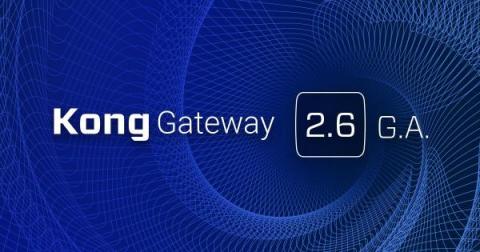Kong Gateway 2.6 Now Generally Available!
Today, we are proud to announce the general availability (GA) of Kong Gateway 2.6! Kong Gateway 2.6 brings some of the most requested features by users and customers to date. Be sure to upgrade or try out a fresh install today! Kong Gateway 2.6 compatible releases will be available with Konnect, our SaaS platform, shortly! Read on for more details of the included functionality.











